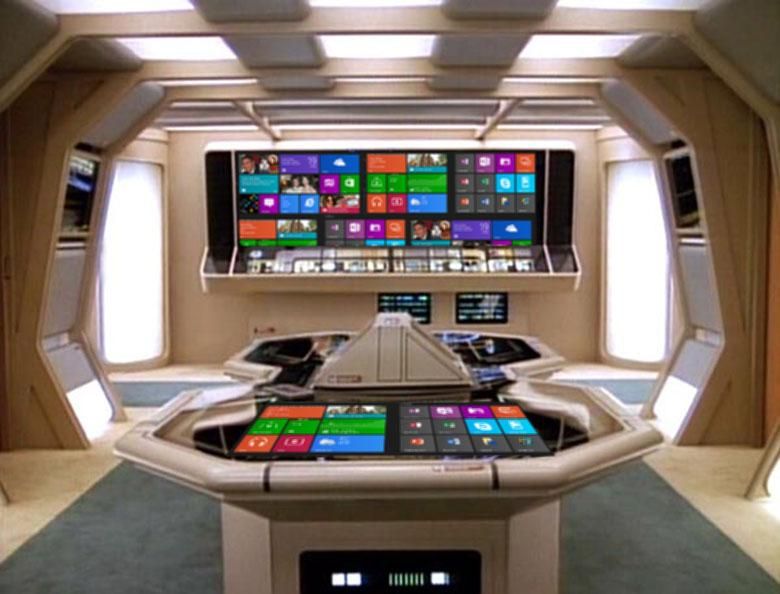Star Trek is one of the most widely praised science fiction series of the 20th century. I highly doubt that anybody working in the technology industry today has never seen at least one episode of Star Trek. As is often the case, fact follows fiction and all of those people who ever saw a Star Trek episode have often thought to themselves, “Wouldn’t that be cool if we could really make that?”
This week, Microsoft has been featuring some special Star Trek images and facts as part of an Easter Egg interface on Bing.com and of course the new “Star Trek: Into Darkness” is being released to much fanfare. Obviously Microsoft has a bit of a thing for the science fiction series, but it also shows in many of their products and latest innovations these days.
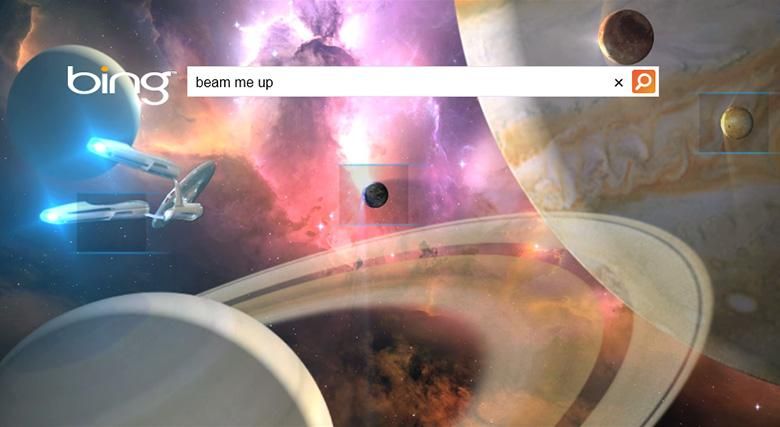
Communicators
Back in the 1960’s, handheld computing and communications devices were extremely far away from reality. From 2002-2007 Microsoft was the front runner in terms of developing the most powerful mobile computing and communications devices known as Smartphones. And if you wanted to, you could even make them look like Star Trek tricorders.
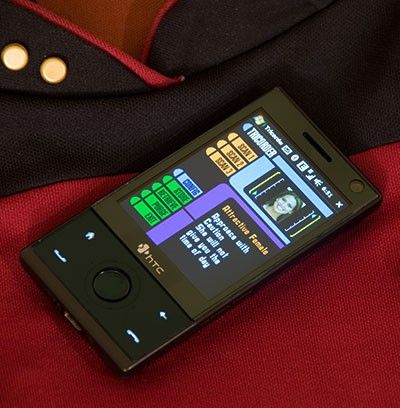
Modern User Interface
Most PCs, tablets and smartphones these days employ a slight variation on the original graphical user interface copied from Xerox in the 1980’s. Everything is basically a layout of icons with intricate skeuomorphic designs and text labels underneath. In the future, according to Star Trek, human-computer interaction design has evolved to a more modern and digitally-authentic style.
The computer user interface designs in Star Trek: The Next Generation employ brightly colored shapes on a black background. Of course you can see how that style may have influenced the design of Windows Phone’s “Metro” design language which has shown through on Windows 8 as well. It’s simple and easy to read… and the future has always been about making things easier.
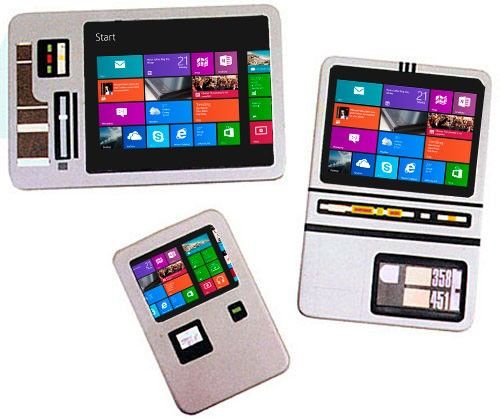
A Unified Operating System
On Star Trek, everything runs on the same computing operating system called LCARS which stands for Library Computer Access/Retrieval System. Whether you’re sitting at a desk, standing over a table, holding a tablet (“Personal Access Display Device”), tapping your communicator, or using voice commands in the holodeck, it’s all working together off of the same code base. That’s the same kind of thing that Microsoft is trying to do. With Windows Phone 8, Microsoft’s lightweight mobile operating system now shares the same powerful core as its high end desktop and datacenter server operating systems. The unified operating system will probably also come to the living room in the form of a next generation Xbox as well.
Speech Interface
Back in 2003, Microsoft’s Voice Command software for Windows Mobile was way ahead of its time in terms of functionality. It was extremely impressive. These days there are all sorts of speech recognition apps, but with Windows Phone 8, Microsoft again took it to the next level with a fully extensible built in speech UI that any 3rd party developer can teach new tricks by implementing some simple APIs.
While Windows 8 doesn’t quite have the same voice recognition capabilities as Windows Phone 8, Microsoft’s Xbox 360 does happen to share the same speech engine and learning method. In other words, as you use Microsoft’s speech UI in the living room and on your phone, both are improved from the same data.
Holodeck Version 1
The Holodeck on Star Trek is one of the most amazing pieces of science fiction technology. Essentially, a physical environment is replicated around you and moved beneath your feet as you move yourself. In order to create something like that, the computer needs to be able to see your body and instantly alter the environment to your movements. Programmed characters need to be able to “see” you and react to your voice, gestures, or jump kicks.
Microsoft’s Kinect is really the first step towards this type of immersive gaming technology since it’s the first bit of technology that can put your actual body inside a video game. If you don’t know what I mean, take a look at Kinect Party for the Xbox 360. That game puts you, your friends, and your living room into the game and allows you to interact with imaginary objects and environments as if they were real.
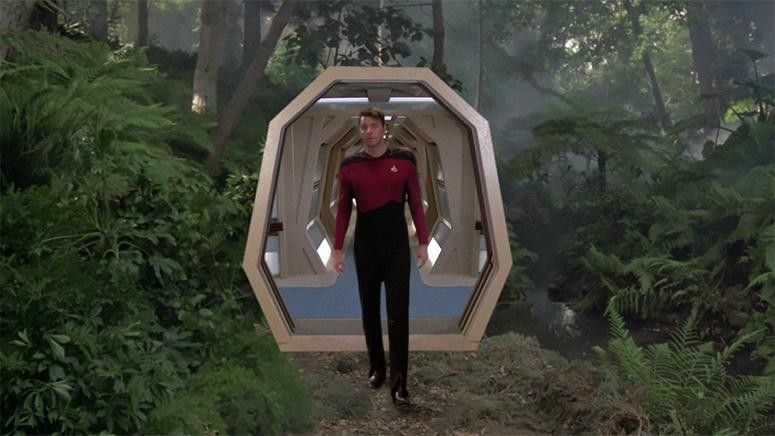
Only Blind People and Evil Antagonists Wear Computers on Their Faces All The Time
This one is a bit of a blow to the controversial and popular Google Glass wearable computing peripheral which has already been banned in a number of places preceding its public availability. In the Star Trek universe, nobody wears this type of technology on their face at all times unless you’re blind and require a bit of extra technology just to see, although in the recent “Star Trek: Into Darkness” movie, the characters’ space helmets did provide some heads-up graphics while navigating. In general, science fiction writers have known for a long time that a clear view to another person’s eyes is an important part of social interaction and communication, so the heads up display eyewear really only makes sense in certain work-related scenarios. On the other hand, the Borg wear electronic gadgets over their faces in order to stay constantly connected to the collective at all times, so maybe that kind of thing is in our future after all.
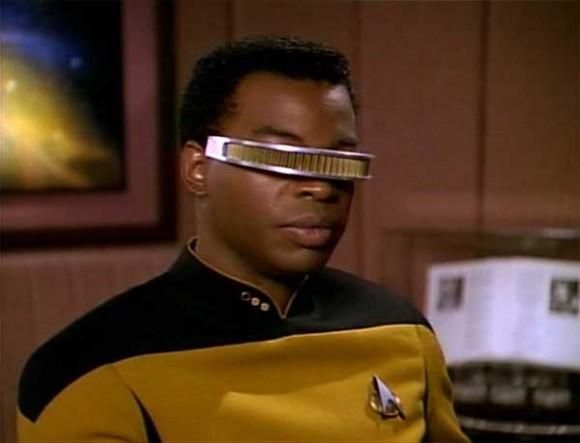
Nobody Wears Wrist Watches in the Future
Not once have I seen anyone on Star Trek look at a screen on their wrist in day to day life aboard a futuristic star ship. Microsoft did make smart “SPOT” watches back around the turn of the century when watches in general had begun to die out, but they’re not likely to make a resounding comeback in the future.
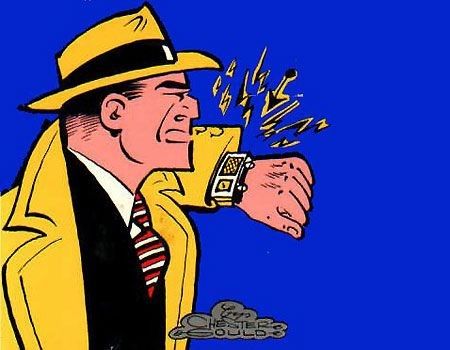
Now that we’ve taken a look at a few things that Microsoft may have learned from Star Trek science fiction authors. What’s the next step? Are food replicators on the horizon? Holodeck version 2? Smartphones built into a pin on your shirt? Let us know in the comments below.

